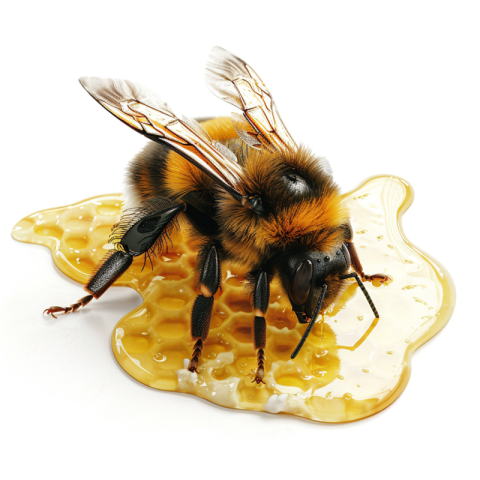
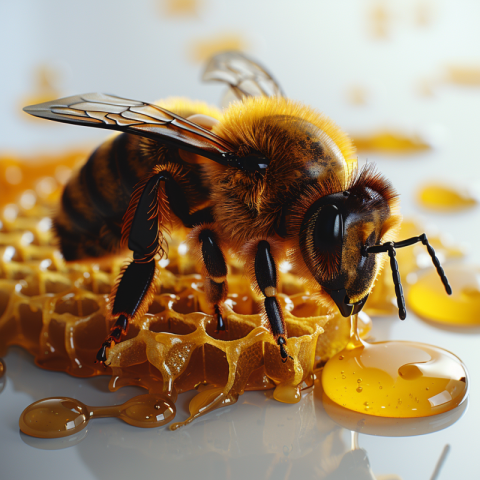
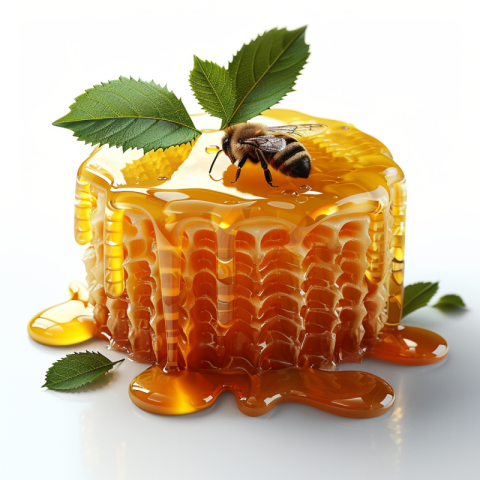
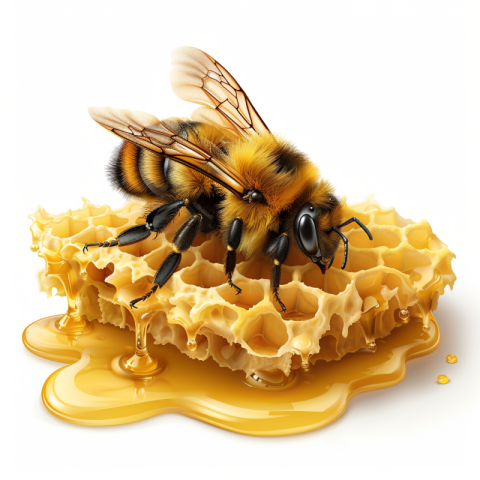
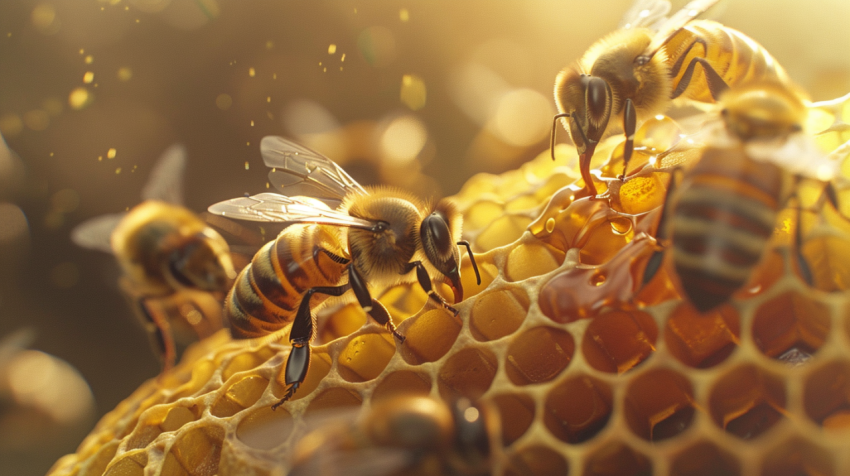
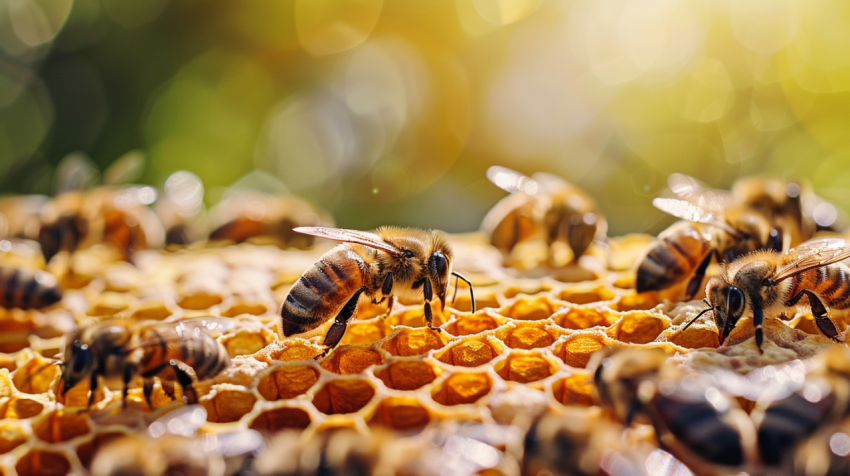
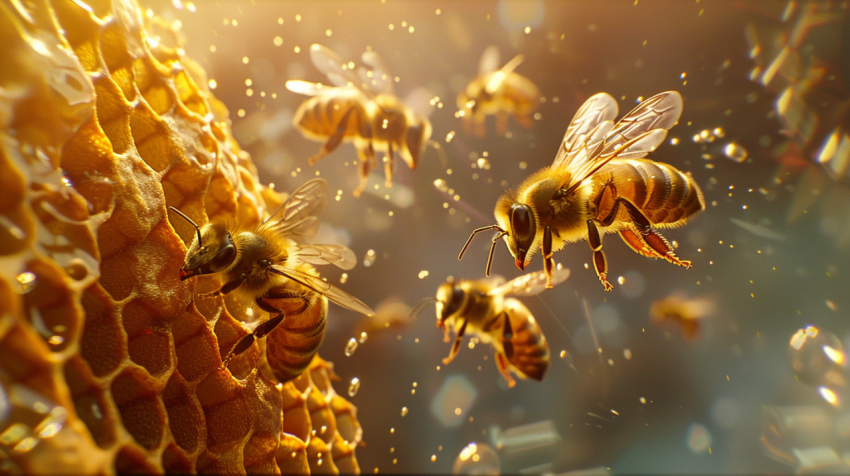
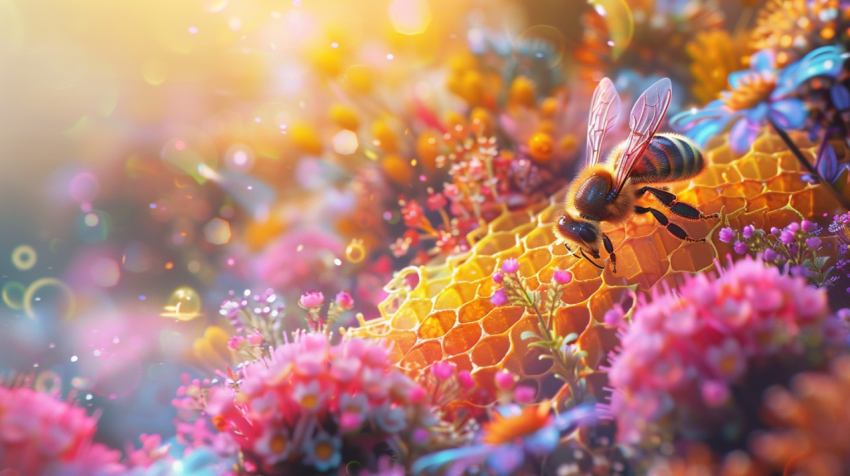
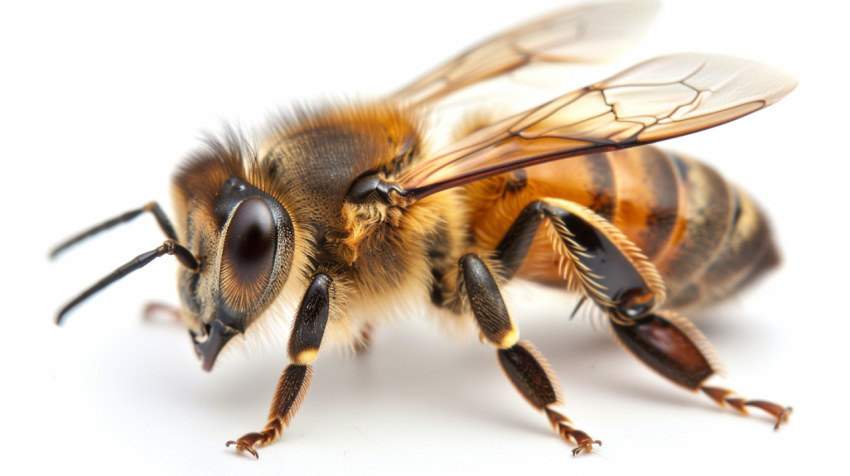
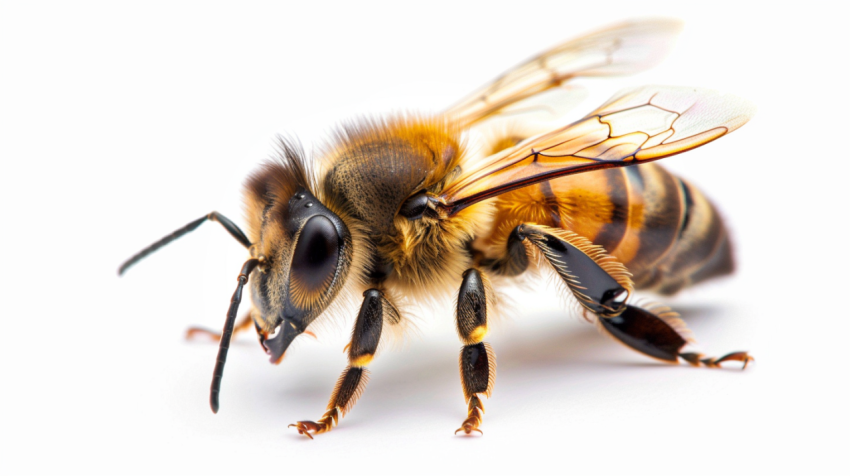
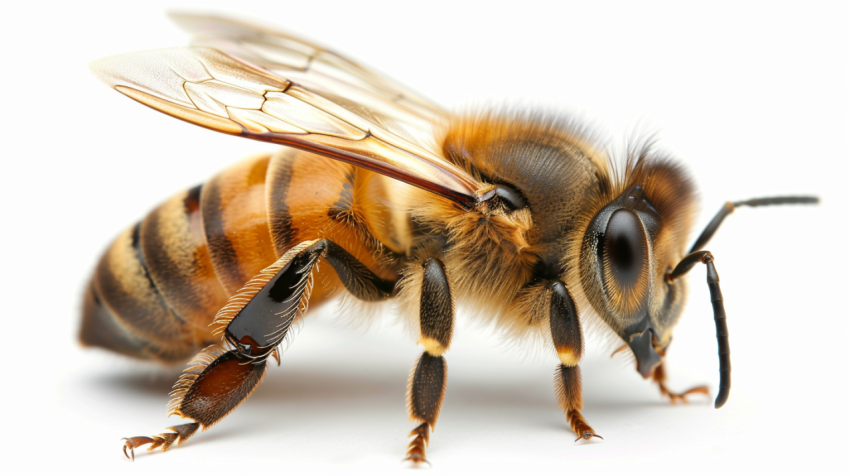
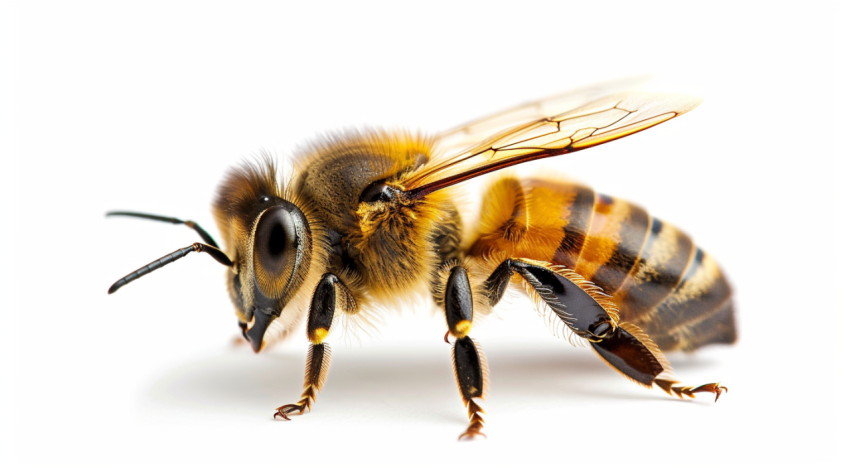
The Vital Role of Honey Bees: Pollination, Honey Production, & Society
Honey bees are not just producers of the sweet, golden liquid we call honey; they are crucial players in the global ecosystem. These industrious insects are renowned for their role as pollinators, their complex social structure, and the various products they provide, such as beeswax, pollen, and royal jelly. This exploration delves into the fascinating world of honey bees, focusing on their biological features, social organization, economic importance, and the challenges they currently face.
1. Honey Bee Biology and Anatomy:
- Exoskeleton: Like all insects, honey bees have a hard exoskeleton made of chitin, providing protection and support.
- Body Segmentation: Their bodies are divided into three segments: the head, thorax, and abdomen.
- Wings: Honey bees have two pairs of wings, allowing them to fly long distances in search of nectar and pollen.
- Pollen Baskets (Corbiculae): Located on their hind legs, these specialized structures are used to collect and transport pollen.
- Proboscis: A long, straw-like tongue used to suck nectar from flowers.
- Stinger: The queen and worker bees possess a barbed stinger used for defense. When a worker bee stings, the stinger gets lodged in the victim's skin, resulting in the bee's death.
2. Diversity of Honey Bee Species:
While the Western honey bee (Apis mellifera) is the most well-known and widely managed species, there are several other species of honey bees, mostly found in Asia:
- Apis cerana (Eastern honey bee): Native to Asia, it is smaller than Apis mellifera and also used for honey production.
- Apis dorsata (Giant honey bee): Builds large, exposed nests and is known for its aggressive defensive behavior.
- Apis florea (Dwarf honey bee): The smallest honey bee species, it also builds exposed nests.
3. Honey Bee Colony Structure and Social Organization:
Honey bee colonies are highly organized societies with a distinct division of labor:
- Queen: The only reproductive female in the colony, responsible for laying eggs. She can live for several years and lay thousands of eggs per day.
- Workers: Sterile females that perform all the tasks necessary for colony survival, including foraging, nursing the brood, building and maintaining the hive, and defending the colony. Worker bees have a lifespan of a few weeks to a few months, depending on the season.
- Drones: Male bees whose sole purpose is to mate with the queen. They do not have stingers and are expelled from the hive in the winter.
4. Communication in Honey Bee Colonies:
Honey bees have sophisticated communication methods:
- Waggle Dance: A unique "dance" performed by worker bees to communicate the location, distance, and quality of food sources to other bees.
- Pheromones: Chemical signals used for various purposes, such as attracting mates, signaling alarm, and marking the hive entrance.
- Trophallaxis: The exchange of food and liquids between bees, which also plays a role in communication and social bonding.
5. Honey Bee Diet and Foraging Behavior:
Honey bees are essential pollinators, collecting nectar and pollen from flowers:
- Nectar: The primary source of carbohydrates for honey bees, used to make honey.
- Pollen: The primary source of protein, vitamins, and minerals, essential for the development of larvae and the health of adult bees.
- Foraging: Worker bees travel up to several miles from the hive in search of food sources.
- Pollination: As bees collect nectar and pollen, they transfer pollen grains between flowers, facilitating plant reproduction.
- Propolis: A resinous substance collected from trees, that is used to seal cracks and protect the hive from bacteria and fungi.
- Royal Jelly: Is the sole of the queen bee, a substance rich in nutrients.
- Bee Bread: Mixture of pollen, honey, and bee saliva that is fermented and stored.
6. Honey Bee Life Cycle:
The honey bee life cycle involves four stages:
- Egg: The queen lays eggs in individual cells of the honeycomb.
- Larva: Worm-like larvae hatch from the eggs and are fed by worker bees.
- Pupa: Larvae develop into pupae, undergoing metamorphosis within their cells.
- Adult: Adult bees emerge from their cells, ready to take on their roles within the colony.
7. Honey Production:
Honey production is a complex process:
- Nectar Collection: Worker bees collect nectar from flowers using their proboscis.
- Enzyme Addition: Enzymes in the bee's honey stomach begin to break down the nectar's complex sugars into simpler sugars.
- Evaporation: Bees fan their wings to evaporate excess water from the nectar, concentrating it into honey.
- Storage: Honey is stored in hexagonal cells of the honeycomb and capped with beeswax for long-term preservation.
8. Economic Importance of Honey Bees:
Honey bees are incredibly valuable to agriculture and the economy:
- Pollination Services: Honey bees are responsible for pollinating a significant portion of the world's crops, including fruits, vegetables, nuts, and seeds.
- Honey and Beeswax Production: Honey and beeswax are valuable commodities used in food, cosmetics, and other industries.
- Other Bee Products: Propolis, royal jelly, and bee pollen are also harvested and used for their purported health benefits.
9. Threats to Honey Bees:
Honey bee populations are facing numerous threats:
- Pesticide Exposure: Pesticides, particularly neonicotinoids, can harm or kill bees.
- Habitat Loss: The loss of flowering plants reduces the availability of food sources for bees.
- Parasites and Diseases: Varroa mites, Nosema disease, and other parasites and diseases can weaken and kill bee colonies.
- Climate Change: Changes in temperature and precipitation patterns can affect bee foraging behavior and the availability of food sources.
- Colony Collapse Disorder (CCD): A phenomenon characterized by the sudden and unexplained disappearance of worker bees from a colony. The exact cause of CCD is still under investigation, but it is likely a combination of factors.
10. Conservation Efforts:
Various efforts are underway to protect honey bee populations:
- Promoting Bee-Friendly Practices: Planting pollinator-friendly gardens and reducing pesticide use.
- Researching Bee Health: Studying bee diseases and developing methods to improve bee health.
- Supporting Beekeepers: Providing resources and education to beekeepers to help them manage their colonies effectively.
- Protecting Bee Habitats: Conserving and restoring natural habitats that provide food and nesting sites for bees.
Conclusion:
Honey bees are vital to our ecosystem and economy. Their pollination services are essential for food production, and their honey and other products are valuable commodities. Protecting honey bee populations is crucial for ensuring food security and maintaining biodiversity. By understanding the challenges they face and supporting conservation efforts, we can help ensure the survival of these remarkable insects for generations to come.
Honey bee pollination, honey production, honey bee colony, queen bee, worker bees, drone bees, honey bee life cycle, waggle dance, honey bee communication, Apis mellifera, beekeeping, beeswax, royal jelly, propolis, bee pollen, bee bread, varroa mites, Nosema disease, Colony Collapse Disorder (CCD), neonicotinoids, pollinator-friendly plants, honey bee health, threats to honey bees, honey bee conservation, economic importance of honey bees, pesticide exposure, habitat loss, Giant honey bee, Dwarf honey bee.
